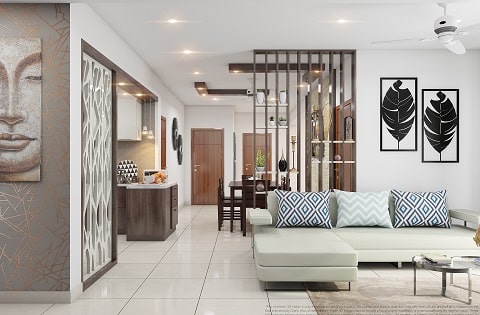Well-Designed Living: Exploring the Positive Impacts and Benefits of Interior Design
A well-designed living space extends beyond mere aesthetics, becoming a catalyst for positive change in our daily lives. Interior design holds the power to shape environments that not only visually delight but also contribute to the overall well-being of individuals.
One of the key benefits lies in the creation of functional and organized spaces. Interior designers adeptly utilize space planning and storage solutions to enhance the efficiency of a living area, ensuring that every nook and cranny serves a purpose. This meticulous approach contributes to a more organized and stress-free lifestyle.
Moreover, a thoughtfully designed interior can significantly impact the atmosphere of a space. Strategic use of color schemes, lighting, and materials can evoke specific moods, fostering a sense of comfort and relaxation. In homes, this translates to a more inviting and harmonious environment that positively influences the mental and emotional states of its residents.
Ultimately, well-designed living spaces are not just aesthetically pleasing; they are transformative environments that enhance the quality of life. Interior design becomes a powerful tool for creating spaces that are not only beautiful but also nurturing, contributing to a positive and enriching daily experience.
Enhancing Lives Through Design: The Numerous Benefits of Interior Design
Interior design is a powerful tool that goes beyond creating visually appealing spaces; it has the potential to positively impact lives on various levels. By prioritizing functionality, comfort, and aesthetics, interior designers contribute to the overall well-being of individuals and communities.
One significant benefit lies in the creation of environments that promote mental and emotional well-being. Thoughtful selection of colors, textures, and lighting can influence mood and evoke positive emotions, fostering a sense of harmony and tranquility within a space. This is particularly valuable in homes, where a well-designed interior becomes a sanctuary for relaxation and rejuvenation.
Additionally, interior design plays a pivotal role in supporting functionality and efficiency. Through innovative layouts and space planning, designers can optimize the use of available space, making it more practical and adaptable to the needs of its inhabitants. This is especially relevant in modern urban living, where space is often a premium.
In essence, interior design is not just about creating beautiful spaces; it's about enhancing lives. By considering the holistic experience of a space, designers have the ability to positively influence the daily lives of those who inhabit these thoughtfully crafted environments.
Transforming Spaces: The Power and Benefits of Interior Design
Interior design is not just about decorating spaces; it holds the transformative power to redefine the way we experience our surroundings. Beyond the aesthetic allure, the benefits of interior design are manifold, shaping environments to enhance functionality and well-being.
One key advantage lies in the ability of interior design to reflect and cater to individual lifestyles. Tailoring a space to meet specific needs, whether it's a cozy home retreat or a dynamic office environment, fosters a sense of belonging and purpose. By considering the unique requirements of inhabitants, designers can create spaces that not only look stunning but also align seamlessly with daily routines.
Moreover, interior design has the potential to optimize spatial layouts, making even the smallest areas feel more open and inviting. Strategic placement of furniture, the use of color psychology, and innovative storage solutions contribute to a harmonious and efficient living or working environment.
In essence, interior design is a dynamic force capable of transforming spaces into personalized, functional, and aesthetically pleasing realms. Its influence extends far beyond visual appeal, leaving a lasting impact on the way we inhabit and interact with the places we call home or workspace.
Beyond Aesthetics - Unveiling the Practical Benefits of Interior Design
Interior design goes beyond mere aesthetics; it is a transformative process that greatly influences the functionality and well-being of a space. While the visual appeal of a well-designed interior is undeniable, the practical benefits extend far beyond the surface.
One significant advantage of thoughtful interior design is the optimization of space. Through clever arrangement of furniture and strategic use of lighting, designers can enhance the functionality of a room, making it more efficient and comfortable. This is particularly crucial in today's compact living spaces, where maximizing every square foot is essential.
Furthermore, interior design plays a pivotal role in creating environments that promote health and well-being. From choosing ergonomic furniture that supports posture to incorporating natural elements that contribute to a sense of tranquility, designers can positively impact both physical and mental health.
In the realm of commercial spaces, effective interior design can boost productivity and employee morale. Thoughtfully designed workspaces that prioritize functionality and aesthetics create an inspiring atmosphere that encourages creativity and collaboration.
In conclusion, interior design is a multifaceted discipline that transcends the visual realm, offering practical benefits that enhance the way we live and work. From optimizing space to fostering well-being, the impact of a well-designed interior is profound and far-reaching.




